Diving
Scuba Diving Raja Ampat
Book in advance! Price starting from USD 2.890 / Localizer["pers"] Check Availability2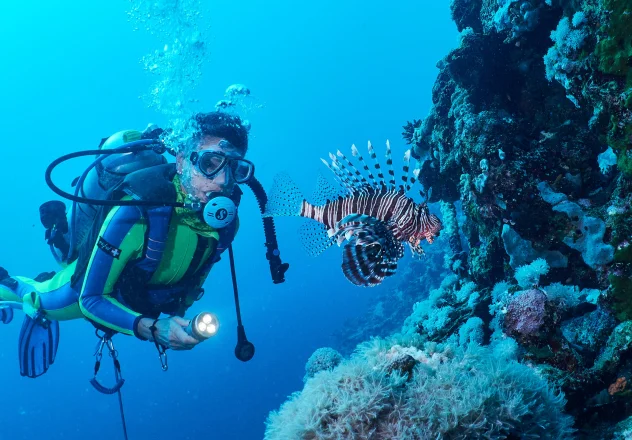
Scuba Diving Raja Ampat
Raja Ampat liveaboards make scuba diving in Raja Ampat on a dive trip an even more unforgettable experience. One of the most world-renowned scuba diving destinations, Raja Ampat offers divers an unparalleled adventure. With Raja Ampat liveaboards, divers can immerse themselves in the most bio-diverse location on the planet, encountering diverse unique aquatic life, sharks, Manta rays, and more during their dive trip.
Scuba diving in Raja Ampat is an adventure like no other. This stunning archipelago, known for its breathtaking beauty and rich marine biodiversity, including the world-famous Raja Ampat scuba diving, boasts an unrivaled underwater world, making it a dream destination for divers. With its status as the most bio-diverse location on the planet, Raja Ampat is teeming with a mesmerizing array of fish life, attracting divers from all around the globe. From vibrant coral reefs to magnificent schools of fish, the waters of Raja Ampat offer a visual feast at every turn.
Dive into the Realm of Majestic Underwater Wonders
The waters of Raja Ampat are home to majestic creatures such as sharks and Manta ray, adding an extra element of excitement to every dive. Whether you’re an experienced diver or a beginner, exploring the depths of Raja Ampat is an unforgettable experience that will leave you in awe of the wonders of the underwater world.
Beyond its rich marine biodiversity, scuba diving in Raja Ampat offers more than just incredible wildlife encounters. The underwater landscapes in this region, including the renowned Raja Ampat scuba diving sites and exhilarating night dives, are breathtakingly beautiful, with colorful coral gardens and dramatic rock formations.
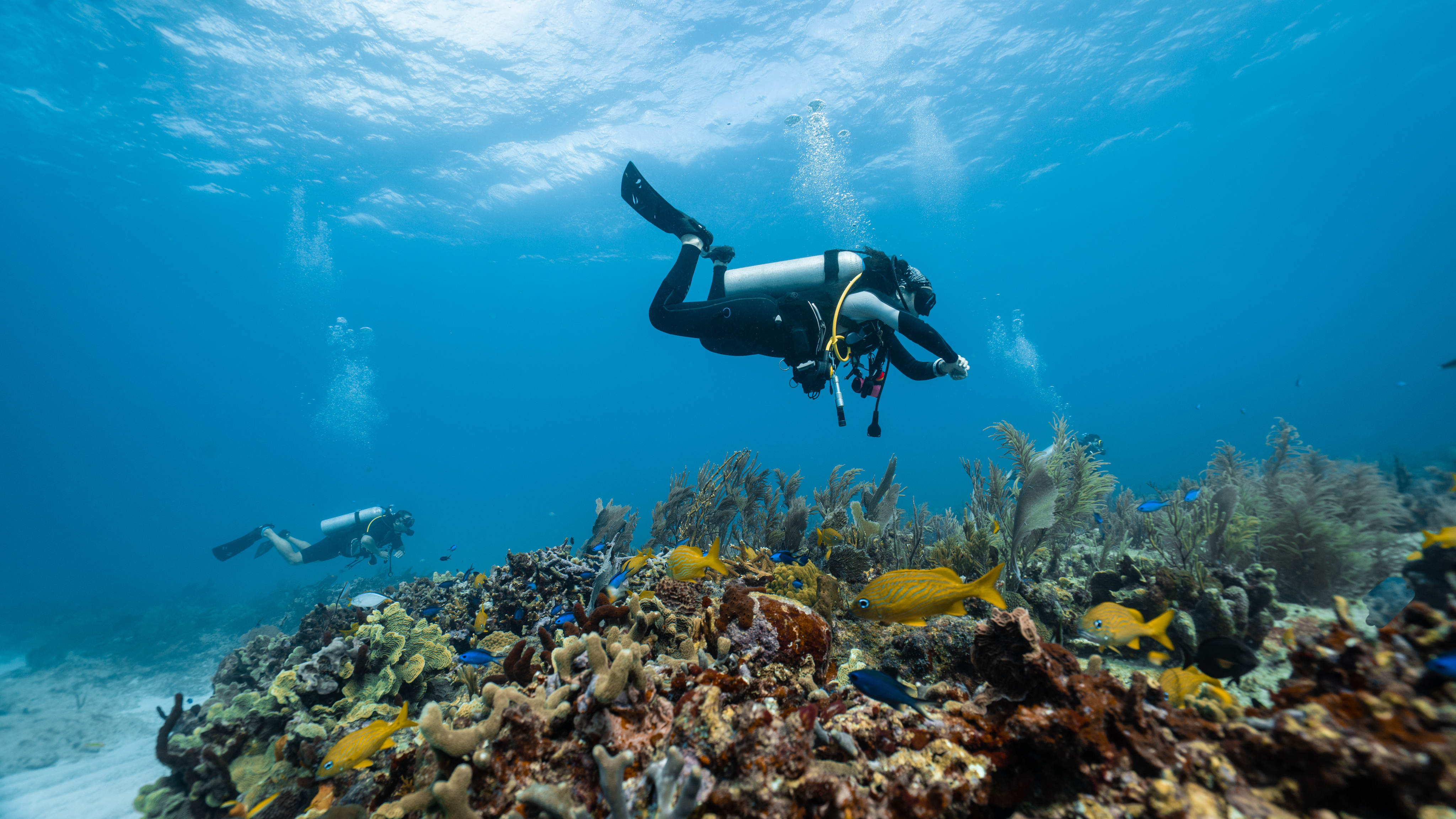

Sublime Subaquatic Adventures
Divers can explore fascinating underwater caves and swim through stunning archways, immersing themselves in a world that seems like something out of a fantasy. The crystal-clear waters provide excellent visibility, allowing divers to fully appreciate the intricate details and vibrant colors of the underwater ecosystem.
Scuba diving in Raja Ampat is not just about observing aquatic life but also about being immersed in the stunning natural scenery. The combination of vibrant coral reefs, impressive rock formations, and underwater caves creates a captivating environment for divers to explore. One of the highlights of diving in Raja Ampat is the opportunity to visit a manta ray cleaning station, where these graceful creatures gather to have parasites removed by smaller fish. Raja Ampat offers an abundance of breathtaking dive site, each with its own unique marine ecosystem and captivating underwater landscapes.
Discovering Raja Ampat's Enchanted Underwater Realms
Whether you are an experienced diver looking for new adventures or a beginner eager to discover the wonders of the underwater world, Raja Ampat offers an unparalleled liveaboard diving experience that will leave you awe-struck and longing for more.
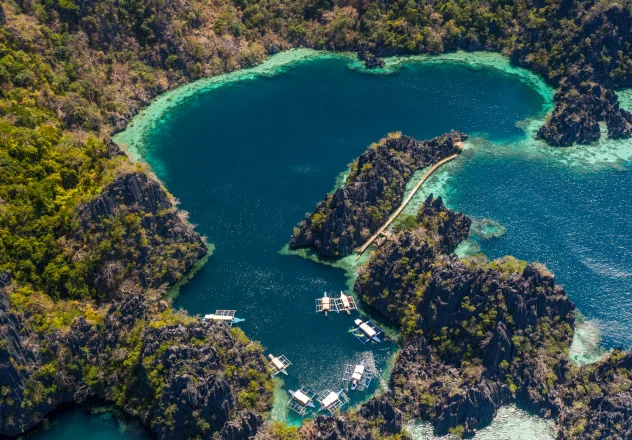

Geography and Environment of Raja Ampat
Located in the heart of the Coral Triangle, Raja Ampat is an archipelago in West Papua, Indonesia. Comprising over 1,500 small islands, this region is recognized for its vibrant coral reefs, biodiverse aquatic life, and pristine white sand beaches. The area’s unique geography and diverse underwater habitats make it a prime location for scuba diving enthusiasts.
The geography of Raja Ampat is characterized by its stunning natural beauty and rich biodiversity. The archipelago is situated in the Coral Triangle, a region known as the epicenter of marine biodiversity. With its crystal-clear turquoise waters, Raja Ampat boasts over 75% of the world’s coral species, making it a haven for snorkelers and divers alike.
Paradise and Below the Surface
The islands are surrounded by extensive coral reefs, inviting you to dive into the vibrant underwater world teeming with colorful fish, sea turtles, and other marine creatures. The lush greenery of the islands, towering limestone cliffs, and hidden lagoons further enhance the picturesque landscape of this tropical paradise, offering an irresistible invitation to dive into its beauty and tranquility.
Besides its mesmerizing aquatic life, Raja Ampat is also home to a diverse range of terrestrial ecosystems. The islands are covered in dense rainforests, mangroves, and unique karst formations. These habitats provide refuge to various endemic plant species and various birdlife, including the iconic red bird-of-paradise. The region is also known for its thriving hard coral species, which create vibrant and intricate underwater landscapes.
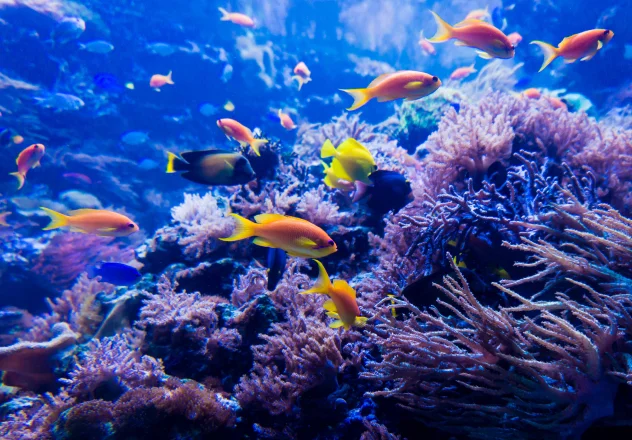
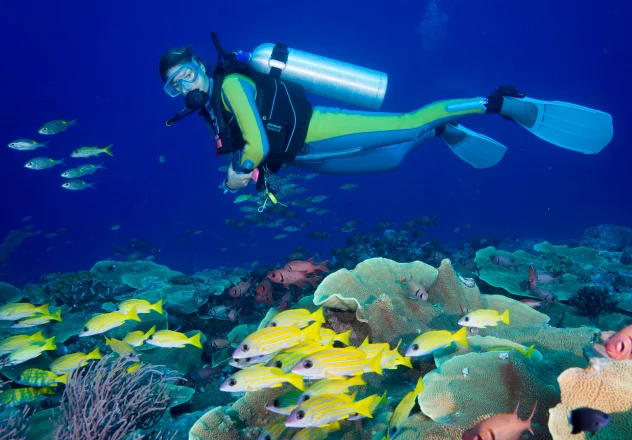
Sustainable Diving and Conservation Efforts in Raja Ampat
Divers can dive and navigate through these stunning coral gardens using a reef hook, allowing them to observe the beauty of the Bird’s Head Seascape up close and without damaging the delicate marine environment.
The unique combination of land and sea environments in Raja Ampat creates an ecological paradise supporting terrestrial and aquatic life in remarkable abundance.
Preserving the fragile environment of Raja Ampat is of utmost importance. In collaboration with conservation organizations and local communities, the local government has implemented several initiatives to protect the archipelago’s natural wonders.
Balancing Conservation and Tourism in the Coral Triangle
Marine protected areas have been established in the Coral Triangle to safeguard the coral reefs, while sustainable tourism practices are promoted to minimize the impact on the delicate ecosystems. Dive efforts are also made to raise awareness about responsible waste management and the conservation of endangered species within the Coral Triangle. By balancing preserving its remarkable natural heritage with promoting sustainable tourism, Raja Ampat, located in the Coral Triangle, continues to enchant visitors while ensuring the long-term survival of its invaluable ecosystems.

7 Popular Dive Sites in Raja Ampat
Raja Ampat dive site provide numerous world-class dive sites, each offering a unique experience. Starting from Manta Rays in Manta Sandy, going to current dive sites like in Blue Magic, let’s explore some of the most popular dive spots for scuba diving Raja Ampat:

Blue Magic
Blue Magic, a scuba diving heaven and captivating seamount, boasts an awe-inspiring tapestry of aquatic life that mesmerizes divers from across the globe, including those who venture to Raja Ampat diving. As one descends into its depths, an extraordinary world comes alive, especially during a night dive. The azure waters teeming with bustling schools of fish, their silvery bodies moving in perfect synchrony, illuminated by the glow of dive lights. Among them, barracuda dart through the currents with sleek agility, their menacing presence adding an exhilarating thrill to the underwater adventure.
Gliding effortlessly through this scuba diving heaven’s underwater symphony, divers witness a mesmerizing spectacle as trevally and fusiliers dive, creating a vibrant spectacle of darting colors. Their vibrant hues blend harmoniously with the vivid corals and gorgonian sea fans that adorn the seamount.
Yet, the wonders of Blue Magic, a true scuba diving heaven, extend beyond the fish and corals. This mystical dive site has earned a reputation for its encounters with majestic manta rays gracefully soaring through the water. With their immense wingspan and gentle nature, these enigmatic creatures offer divers an ethereal experience as they gracefully glide above.
The seamount, known as one of the world’s best dive sites, hides treasures in its shadows as divers dive into the water, and wobbegong sharks stealthily lurk among the corals and rocks. These cunning creatures, with their intricate patterns and cryptic camouflage, provide an element of surprise and intrigue to those fortunate enough to spot them.
With its vibrant tapestry of aquatic life, from shimmering schools of fish to the elegant dance of manta rays, Blue Magic is an advanced divers’ paradise that leaves an indelible imprint on the hearts and minds of all who explore its depths.

Cape Kri
Cape Kri, located in Raja Ampat, Indonesia, is one of the best dive sites and a diver’s paradise that boasts an incredible diversity of aquatic life. With a staggering record of the highest number of fish species documented in a single dive, this underwater wonderland is a testament to the region’s rich biodiversity. For an even more mesmerizing experience, a night dive at Cape Kri unveils a whole new world, as bioluminescent creatures illuminate the darkness and create a surreal atmosphere beneath the waves.
The site’s steep slopes, perfect for a dive, adorned with vibrant hard and soft corals create a breathtaking backdrop for the thriving marine ecosystem. Exploring Cape Kri’s depths on a dive reveals an array of mesmerizing encounters, from graceful reef sharks gliding through the currents to impressive schools of barracuda creating an awe-inspiring spectacle.
Divers are also treated to the sight of various species of sweetlips, snappers, and groupers, their vibrant colors and intricate patterns enhancing the aquatic tapestry. Cape Kri truly captivates divers with its abundance of marine life and serves as a vivid reminder of the importance of preserving these fragile ecosystems for future generations to cherish.
With its teeming marine biodiversity and picturesque underwater landscapes, Cape Kri beckons adventure-seeking divers worldwide. The site’s steep slopes, adorned with a kaleidoscope of hard and soft corals, create an intricate maze of habitats that provide a haven for an extraordinary variety of marine species. As divers descend into Cape Kri’s vibrant waters, they are greeted by the graceful movements of reef sharks patrolling their territories. The swirling masses of barracuda create a mesmerizing sight as if dancing in synchrony with the currents.
The colorful array of sweetlips, snappers, and groupers adds charm to the underwater spectacle with its intricate patterns and striking hues. Exploring is an immersive experience that offers a glimpse into marine life’s remarkable complexity and interconnectedness. This incredible dive site serves as a testament to the resilience and beauty of our oceans, reminding us of the urgent need to protect and preserve these fragile ecosystems for generations to come.

Sauwandarek Jetty
Sauwandarek Jetty, one of the best dive sites, offers a captivating underwater experience that caters to divers of all skill levels. This renowned dive site is known for its shallow waters, making it an ideal location for beginners and those seeking a relaxed dive. The jetty’s majestic pillars, adorned with a colorful array of soft corals and sponges, create a mesmerizing sight that immerses divers in a vibrant marine world at one of the most captivating dive sites in the region.
Divers may even glimpse the elusive mandarin fish, renowned for its vivid colors and intricate mating dance. With its diverse marine life and captivating underwater scenery, Sauwandarek Jetty promises an unforgettable diving experience for enthusiasts and nature lovers.
One of the remarkable features that set Sauwandarek Jetty apart is its rich aquatic ecosystem. The jetty’s pillars act as a haven for a wide range of marine life, offering divers a unique opportunity to witness the wonders of the underwater world.
Beyond the vibrant corals and sponges, the jetty teems with an impressive variety of critters. Divers can spot various species of nudibranchs, each showcasing its distinct colors and patterns. The pygmy seahorses, renowned for their minuscule size and intricate adaptations, provide an enchanting sight for divers with a keen eye.
The highlight of the jetty is undoubtedly the mandarin fish, a species many divers seek. It’s striking appearance and beautiful mating rituals make it a prized encounter. Whether an experienced diver or a novice enthusiast, Sauwandarek Jetty promises an awe-inspiring display of underwater life diversity that will leave you with memories long after you resurface.
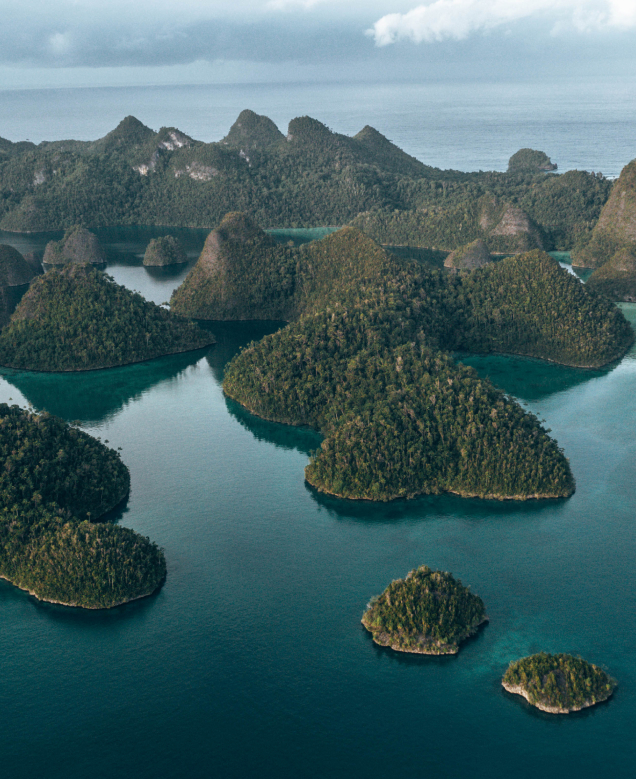
Misool Island
Misool Island is a breathtaking gem in Indonesia’s Raja Ampat archipelago. With its pristine turquoise waters, vibrant coral reefs, and lush tropical landscapes, Misool Island offers a paradise-like setting for nature enthusiasts and adventure seekers alike. The island is renowned for its incredible biodiversity, making it a haven for marine life and a dream destination for snorkelers, scuba divers, and free divers.
Nestled within this natural wonder, the Misool Eco Resort, one of the finest dive resorts in the region, provides an idyllic retreat for visitors, blending luxury and sustainability seamlessly. With its eco-friendly accommodations and commitment to preserving the surrounding environment, the Misool Eco Resort offers a unique opportunity to experience the beauty of Misool Island while minimizing the impact on its fragile ecosystem.
One of the highlights of diving in this area is the famous manta cleaning station, where majestic manta rays gather to have parasites removed by smaller fish, creating a mesmerizing spectacle for underwater observers.
Exploring the underwater wonders of Misool’s vibrant coral gardens and encountering exotic species like manta rays, turtles, and colorful fish at the breathtaking dive site is an unforgettable diving experience.
Aside from its awe-inspiring marine environment, Misool Island boasts stunning above-water landscapes. The island is dotted with towering limestone karsts, hidden lagoons, and secluded white sandy beaches perfect for relaxation and tranquility. Whether you choose to dive into the depths of Misool’s marine treasures or simply immerse yourself in the natural beauty above the water, Misool Island promises an extraordinary adventure for all who visit.
Exploring the island’s lush forests and trekking through its rugged terrain reveal a wealth of unique flora and fauna, providing a true sense of adventure and exploration. The local communities of Misool Island are known for their warm hospitality, and visitors have the opportunity to engage with the locals and learn about their traditional way of life.

Sardine Reef
Sardine Reef is a captivating dive site situated in the azure waters of the Indian Ocean, off the coast of Mozambique. This stunning reef is renowned for its vibrant and diverse marine life, making it a paradise for snorkelers, scuba divers, and enthusiasts of all kinds of dive sites.
As you dive into the crystal-clear waters, you are greeted by a kaleidoscope of colors and a flurry of activity. The reef is teeming with an abundance of marine species, from colorful tropical fish darting in and out of coral formations to graceful sea turtles gliding effortlessly through the water. The sight of a bustling school of sardines moving in perfect unison is a spectacle that leaves visitors in awe.
The reef’s intricate coral formations provide a mesmerizing backdrop and serve as a sanctuary for a myriad of species, including crustaceans, eels, and even the occasional reef shark. Exploring this underwater paradise is like embarking on an underwater treasure hunt, where every turn reveals a new and captivating creature. It is a true testament to the breathtaking beauty and biodiversity of the world’s oceans.
Not only is this location a visual feast, but it also plays a crucial role in the region’s ecological balance. The reef’s thriving ecosystem supports a delicate web of life where each species plays a vital part. The coral formations act as nurseries and feeding grounds for countless marine organisms, ensuring the survival of future generations.
The reef’s diversity provides a rich source of food for local communities and sustains the livelihoods of fishermen in the area. However, like many coral reefs worldwide, it faces numerous threats, including climate change, pollution, and overfishing.
Efforts are underway to protect and preserve this natural wonder, with initiatives focusing on sustainable fishing practices, marine conservation, raising awareness about the importance of coral reef ecosystems, and promoting responsible dive tourism.

Arborek Jetty
Arborek Jetty is a captivating and picturesque wooden platform on the small island of Arborek in Raja Ampat, Indonesia, inviting visitors to dive into the crystal-clear waters surrounding it. This stunning jetty serves as a gateway to the island’s vibrant underwater world and is a popular attraction among snorkelers, divers, and those seeking to dive from around the globe.
The jetty, serving as a popular dive site, stretches out into crystal-clear turquoise waters, offering a breathtaking view of the surrounding coral reefs and marine life. Visitors can easily access the jetty from the island’s main village, which is just a short walk away.
The jetty is meticulously maintained and provides a safe and convenient spot for snorkeling, diving, activities, and exploring the vibrant underwater world. With its vibrant coral gardens and an abundance of colorful fish species, Arborek Jetty offers an unforgettable diving experience for nature enthusiasts, underwater photographers, and avid divers alike.
Arborek Jetty also holds cultural significance for the local community. The island of Arborek is home to the Papuan people, who have inhabited the area for generations.
The jetty acts as a hub for the islanders, where locals and visitors can interact and exchange cultural experiences. The residents of Arborek are known for their traditional handicrafts, particularly their skillful woodcarving, and visitors can admire and purchase these unique creations at the jetty.
The jetty area also hosts cultural performances, where tourists can witness traditional Papuan dances and music, immersing themselves in the island’s rich cultural heritage.

Manta Ridge
Manta Ridge is a renowned diving spot located in the crystal-clear waters of the Raja Ampat archipelago, off the coast of West Papua, Indonesia. It is a haven for marine enthusiasts and adventure seekers, attracting divers from all around the world.
What makes Manta Ridge truly special is its population of majestic manta rays that grace the area. The ridge is situated in a strategic position where ocean currents bring an abundant supply of plankton, the main food source for these gentle giants. As a result, divers are treated to unforgettable encounters with these magnificent creatures as they gracefully glide through the water, showcasing their impressive wingspans. The experience of diving at Manta Ridge is awe-inspiring, offering a rare opportunity to witness the beauty and grace of these magnificent creatures up close.
Apart from the manta rays, Manta Ridge also boasts vibrant coral reefs teeming with a diverse range of aquatic life. Divers can explore the underwater world and marvel at the kaleidoscope of colors provided by the vibrant corals and tropical fish species that call this place home. The visibility at Manta Ridge is often excellent, allowing divers to fully immerse themselves in the underwater spectacle.
The dive site is suitable for both beginners and experienced divers, with varying depths and currents to cater to different skill levels. With its breathtaking marine biodiversity and mesmerizing encounters with manta rays, it has rightfully earned its reputation as a premier destination for underwater exploration and a true paradise for divers.
Marine Life in Raja Ampat
The marine life with scuba diving Raja Ampat is as diverse as it is abundant. Here are some iconic species divers can encounter while exploring this underwater paradise.
Scuba diving Raja Ampat is home to two species of manta rays: reef mantas and giant oceanic mantas. These graceful creatures are often spotted at cleaning stations of Manta Sandy, Dayang, Manta Ridge and very often at Blue Magic as well. Divers can witness mantas swimming gracefully in the currents, feeding on plankton, or even performing barrel rolls.
Some of the dive sites where divers can see Manta Rays
Whale sharks, the largest fish in the ocean, are occasionally seen around Raja Ampat, especially near the nutrient-rich waters of Cenderawasih Bay. These gentle giants are filter feeders, consuming large amounts of plankton and small fish.


Manta Rays
Manta rays are magnificent and enigmatic creatures that glide gracefully through the ocean’s depths, captivating the imagination of marine enthusiasts and scientists alike.
Belonging to the family Mobulidae, these gentle giants are among the largest species of rays, boasting impressive wingspans that can reach up to 25 feet. Their unique appearance is characterized by their triangular pectoral fins, resembling the wings of a majestic bird, which allow them to navigate the waters with astonishing agility.
The Majesty of Manta Rays
Manta rays are:
Filter feeders
Using specialized gill plates to consume vast amounts of plankton and small fish.
Making them crucial contributors to marine ecosystems.

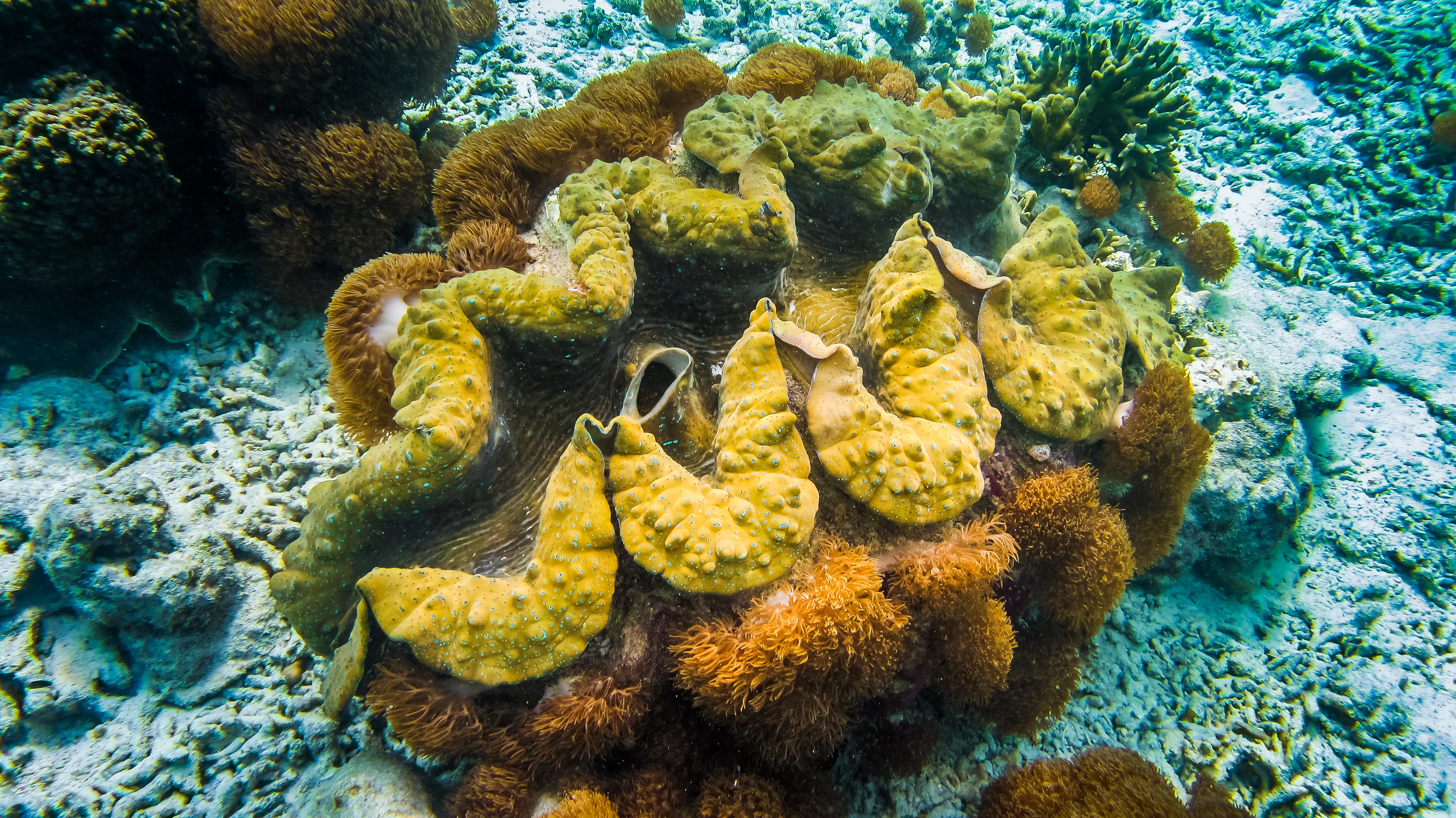
Giant Clams
Giant clams, known for their great size and vibrant beauty, are fascinating marine creatures that inhabit the shallow coral reef ecosystems of the Indo-Pacific region. These magnificent mollusks, belonging to the family Tridacnidae, can grow to great lengths of up to four feet and weigh several hundred pounds.
What sets giant clams apart is their intricately patterned mantle, which harbors an array of stunning colors and striking patterns. They can filter-feed, extracting plankton and other microscopic organisms from the surrounding water using their delicate gills.
Apart from their ecological significance as crucial contributors to reef health, giant clams also play a vital role in maintaining the overall balance of their marine habitats. Regrettably, due to factors like overfishing, pollution, and habitat destruction, many species of giant clams are facing severe population decline and are currently listed as endangered.
Nudibranchs
Nudibranchs, also known as sea slugs, are a fascinating group of marine gastropods that captivate researchers, divers, and nature enthusiasts with their stunning colors, intricate patterns, and diverse forms.
These remarkable creatures, found in oceans worldwide, exhibit an astonishing array of shapes, sizes, and textures.
With their soft, exposed bodies and lack of a protective shell, nudibranchs have evolved ingenious defense mechanisms, often relying on their vibrant hues to advertise their toxicity or to mimic other organisms.
Their striking appearance is attributed to specialized cells called cnidosacs, which contain stinging cells called nematocysts stolen from their prey, such as jellyfish or anemones.
Besides their visual splendor, nudibranchs also exhibit intriguing behaviors, such as complex mating rituals and the ability to swim using rhythmic contractions.


Pygmy seahorses
Raja Ampat is home to several species of pygmy seahorses, including the famous Bargibant’s pygmy seahorse. These tiny, well-camouflaged creatures live on sea fans and are a sought-after sighting for macro enthusiasts.
Wobbegong sharks
The unique wobbegong shark also known as the carpet shark, with its tasseled, camouflaged appearance, can be found resting on the seafloor or hiding among the coral reefs in Raja Ampat. These bottom-dwelling sharks are typically docile, allowing divers to observe them up close.
We like to call them lazy carpets because they rarely move and when they do
Diving Conditions in Raja Ampat
Scuba diving Raja Ampat offers favorable diving conditions throughout the year much like any other scuba diving in Indonesia. Let’s explore the factors that contribute to these conditions and why divers choose to come here. Water temperatures in Raja Ampat remain relatively stable throughout the year, ranging from 27°C to 30°C (81°F to 86°F). Visibility varies depending on the dive site and season, but it generally ranges from 15 to 30 meters (50 to 100 feet). The best visibility is usually found from October to April.
The same period of October to April is also when the water is most calm and with low waves, which makes sailing with a liveaboard nice and easy. While scuba diving Raja Ampat currents can be strong, especially around the full and new moon. Some famous dive sites may experience intense currents, which can make the dive more challenging. It’s essential to follow your dive guide’s instructions and be comfortable with drift diving techniques.
Above all, we warmly recommend that all divers who plan to do scuba diving Raja Ampat either with the best Raja Ampat liveaboard or with a Raja Ampat diving resort, to listen carefully to the dive briefings provided by the local dive guides.
For example, Blue Magic most often offers an incredible diving experience with low to medium currents. But there will be times when the currents will simply blow you away.
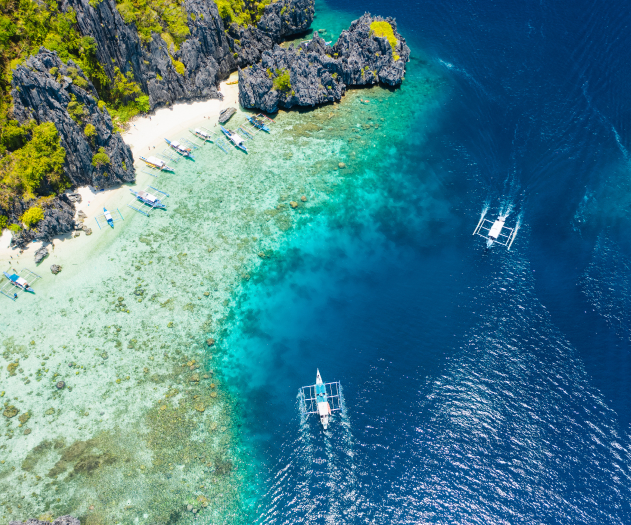

Best times of year for Raja Ampat Scuba Diving
Raja Ampat Archipelago is a year-round diving destination, but the best conditions are typically found from October to April, making it the perfect time for a dive trip or dive holiday in the Raja Ampat Archipelago. This period sees scuba diving Raja Ampat with calmer seas and better visibility, offering an ideal opportunity to explore the underwater world during your dive adventure.
In October, all of the liveaboard trip move from Komodo to scuba diving in Raja Ampat, and of course, they leave in April from Raja Ampat for liveaboard trips to scuba diving in Komodo.
Frequently Ask Question
Everything you need to know about the product and billing. Can’t find the answer you’re looking for? Please chat to our friendly team.
See More FAQs